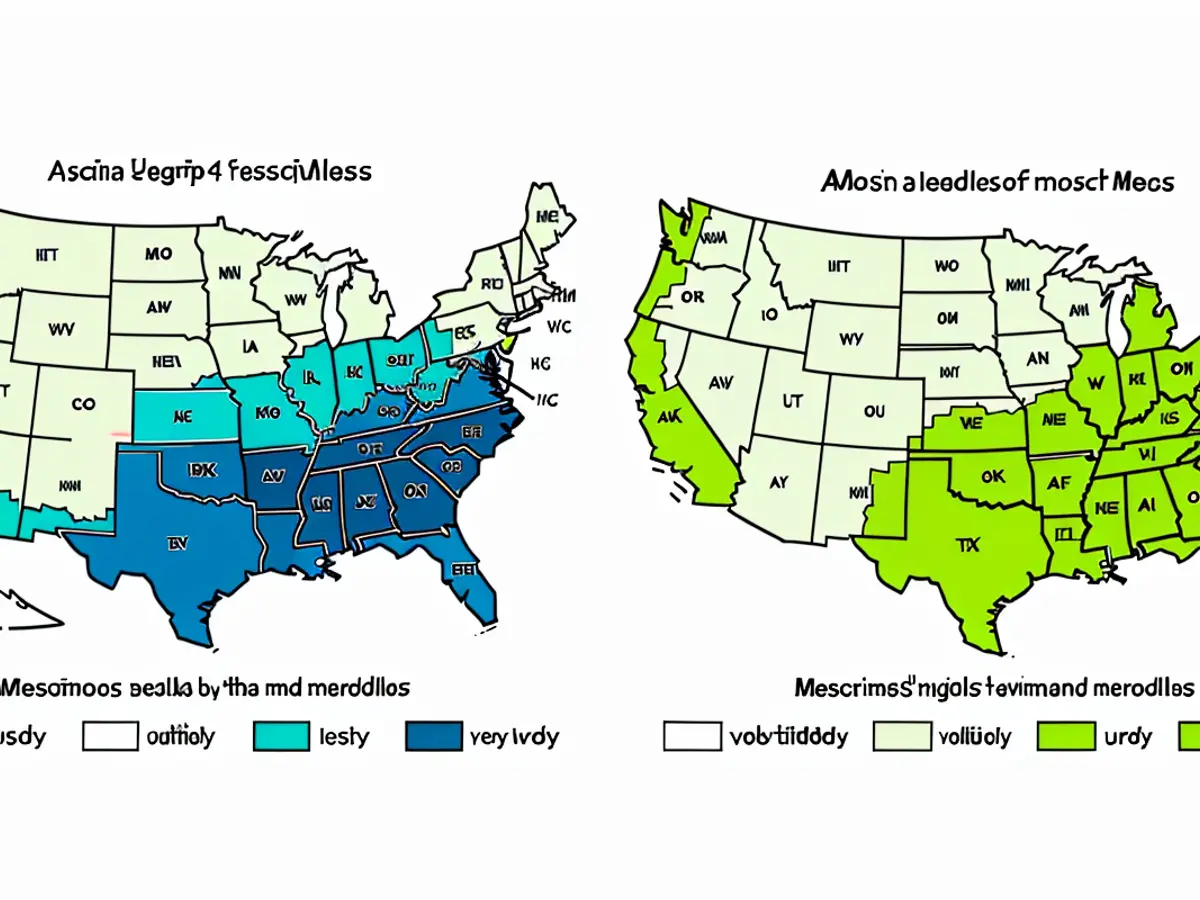Where Mosquitoes Are More Likely to Transmit Dengue, According to the CDC
The CDC issued a health advisory Tuesday, warning healthcare providers and the general public that the United States is at an increased risk of dengue infections. Dengue is a mosquito-borne disease that can be pretty brutal—severe cases are sometimes known as “breakbone fever”—but some of us can relax a little: the mosquitoes that transmit it only live in some parts of the U.S.
What is dengue?
Dengue is a viral illness, and the virus is transmitted by mosquitoes—specifically Aedes species. (Yes, there are different species of mosquitoes.) It is mainly found in tropical and subtropical regions.
There are four types of dengue, numbered simply 1, 2, 3, and 4. If you contract and recover from one of them, you’ll be immune to that type, but remain susceptible to the others. Getting a second dengue infection, of a different type than the first, increases the risk that your illness will be more severe.
The symptoms of a mild case of dengue include high fever, body aches, and often a rash. You may also experience nausea and vomiting, and a headache and/or pain behind the eyes. Most people recover in 1 to 2 weeks, the World Health Organization says.
In severe cases of dengue, more symptoms may appear after the fever has gone away. The WHO lists these as including severe abdominal pain, bleeding gums or nose, blood in the vomit or stool, and feelings of extreme fatigue, thirst, and weakness. Dengue is the world’s most common insect-transmitted disease.
There is no antiviral treatment for dengue, only supportive care. There was a vaccine for it, available for children in areas where dengue is endemic, but the manufacturer discontinued it due to lack of demand, the CDC said in its health advisory. Puerto Rico declared a dengue epidemic earlier this year, and they are using their remaining available doses before they expire.
Most cases of dengue in the continental U.S. are from travelers, but we do have some local transmission
With the CDC’s advisory making headlines, it’s important to keep in mind where dengue is being transmitted right now. Most of the continental U.S. does not have local transmission of dengue; you can’t walk outside and catch it right now.
So why the advisory? Well, many of the places you can catch dengue are popular vacation destinations. There are also several U.S. territories and freely associated states that have “frequent or continuous” dengue transmission, according to the CDC:
- Puerto Rico
- American Samoa
- U.S. Virgin Islands
- Federated States of Micronesia
- Marshall islands
- Palau
In the continental U.S., it is possible to contract dengue locally, but so far there aren’t many of these cases. Florida, Hawaii, Texas, Arizona, and California have all had locally transmitted dengue cases.
So far this year, there have been 1,498 cases in Puerto Rico, and 745 travel-related cases in the U.S. (meaning that somebody traveled to an area with dengue, then brought the virus back with them). A travel case can turn into a local outbreak, although this isn't common. Say your neighbor just got back from a vacation in Puerto Rico, and you both live in Florida. It's possible for a mosquito to bite that person, and then to bite you. Therefore, the CDC is asking healthcare providers to keep in mind that a person who hasn't traveled might still have contracted dengue locally, if they live in an area with the right kind of mosquitoes.
Where do dengue-carrying mosquitoes live?
Dengue is transmitted by Aedes mosquitoes, especially Aedes aegypti, but sometimes Aedes albopictus. These mosquitoes are small and have black and white patterns (if you look closely), and they bite during the day, not just dusk and dawn. They can also breed in very small containers of standing water, like the saucers underneath flowerpots.
These differences separate them from Culex mosquitoes, which are the more common type in much of the U.S. Culex mosquitoes aren’t considered “competent” vectors of dengue, so if your area only has Culex, you only have to worry about travel cases, not (likely) local ones.
So where are Aedes mosquitoes? The CDC’s most recent maps are from 2017, but here they are. A. aegypti is “very likely” to thrive in most of the south, from Florida to Texas and up into Kentucky and parts of Oklahoma and Missouri. There are also “very likely” areas in Texas, Arizona, and California.

Credit: CDC
Aedes albopictus can live and reproduce in many of the same areas, but are less likely to thrive in Arizona and California. On the other hand, the northernmost part of their range extends a bit further, up into Ohio, New Jersey, and parts of Pennsylvania.
In the seven years since these maps were published, it’s possible that the mosquitoes’ range has grown. Aedes mosquitoes like warm temperatures, and climate change has given us more of those. Dengue is also transmitted more readily in warmer and wetter parts of the year, and we’ve been getting more of those as well.
How can I protect myself from dengue?
The CDC recommends that we all take steps to protect ourselves from mosquito bites. This includes using EPA-registered repellents on your skin. I like Cutter Skinsations (7% DEET, good enough for my backyard) but there’s also Repel 100 if you want very strong protection.
Air conditioning, window screens, and loose-fitting, long-sleeved clothing also make the CDC’s top mosquito bite prevention tips. If you’re traveling to a warm or tropical area, the CDC wants you to make sure to prevent bites while you’re there, too. Large bottles of insect repellent, since it’s a liquid, will have to go in your checked baggage, but I like prepackaged repellent wipes like these for your carry-on.
The CDC also wants you to seek medical care if you get symptoms that may be dengue and if you are in an area that is known to have dengue transmission. The incubation period is seven to 10 days, so it’s possible you may not start to show symptoms until after you get home. The CDC has a list and map here of locations outside the U.S. where dengue risk is high.
The advisory from the CDC reminds healthcare providers and the general public that dengue, a severe mosquito-borne disease, is at an increased risk in the United States. Some individuals may be concerned about where dengue is currently being transmitted, as local transmission is possible in certain areas such as Florida, Hawaii, Texas, Arizona, and California. The World Health Organization suggests that most people recover from mild dengue cases within 1 to 2 weeks; however, severe cases can include severe abdominal pain, bleeding, and extreme fatigue.








